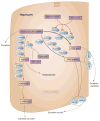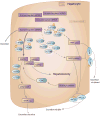PharmGKB summary: pathways of acetaminophen metabolism at the therapeutic versus toxic doses
- PMID: 26049587
- PMCID: PMC4498995
- DOI: 10.1097/FPC.0000000000000150
PharmGKB summary: pathways of acetaminophen metabolism at the therapeutic versus toxic doses
Conflict of interest statement
RBA and TEK are stockholders in Personalis Inc. The other authors declare no conflicts of interest. GAF is the McNeil Professor of Translational Medicine and Therapeutics.
Figures


References
-
- Toussaint K, Yang XC, Zielinski MA, Reigle KL, Sacavage SD, et al. What do we (not) know about how paracetamol (acetaminophen) works? J Clin Pharm Ther. 2010;35:617–638. - PubMed
-
- Graham GG, Davies MJ, Day RO, Mohamudally A, Scott KF. The modern pharmacology of paracetamol: therapeutic actions, mechanism of action, metabolism, toxicity and recent pharmacological findings. Inflammopharmacology. 2013;21:201–232. - PubMed
-
- Ubaldo CD, Hall NS, Le B. Postmarketing review of intravenous acetaminophen dosing based on food and drug administration prescribing guidelines. Pharmacotherapy. 2014;34(Suppl 1):34S–39S. - PubMed
-
- Hodgman MJ, Garrard AR. A review of acetaminophen poisoning. Crit Care Clin. 2012;28:499–516. - PubMed
Publication types
MeSH terms
Substances
Grants and funding
LinkOut - more resources
Full Text Sources
Other Literature Sources
Molecular Biology Databases

